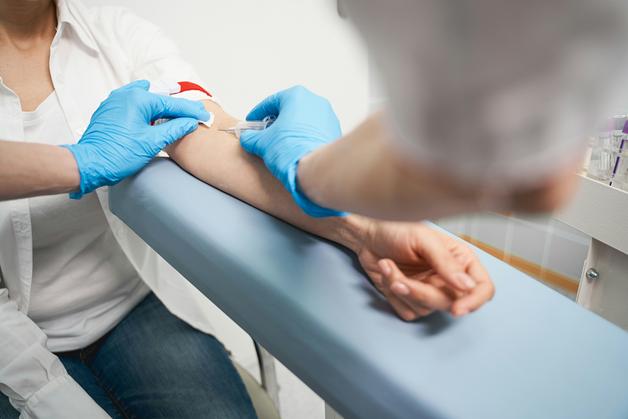Imagine the moment—a flurry of questions, a heart racing, doubts mingling with a kind of hope that’s difficult to put into words. For many parents, using a pregnancy test feels almost like standing at a crossroads, the stakes high and the outcome life-changing. Should you trust the faintest second line? Can symptoms alone be relied upon? If you are navigating this uncertain territory, pause for a moment. The journey of understanding and interpreting a pregnancy test can be filled with anticipation and worry, but science and experience offer reassurance. This comprehensive guide deciphers the role of hCG, the importance of timing, differences between test types, and the practical side of reading those lines—while addressing the silent anxieties parents often carry.
How Pregnancy Tests Work and the Science Behind hCG
A pregnancy test operates by detecting a singular, potent molecule: human chorionic gonadotropin, otherwise known as hCG. This hormone surges soon after a fertilized egg nestles into the uterine lining, usually within 6–10 days of conception. In essence, the presence of hCG is a direct biological “yes” to pregnancy—its absence, a likely “not yet.”
Home urine pregnancy tests, almost magical in their immediacy, sense hCG at a threshold usually between 20–50 mIU/mL. Blood tests—administered in clinical settings—are not just more sensitive, picking up signals as faint as 1–2 mIU/mL, but can detect pregnancy as early as 7–10 days post-ovulation.
But why is timing such a huge deal? If you test before hCG has reached detectable levels, you risk a clear negative when reality might whisper positive. That’s why waiting till the day after a missed period (or even longer for those with irregular cycles) is more than just medical advice—it’s about granting your body time to clearly announce its news.
Different Types of Pregnancy Tests: Which to Choose?
Home Urine Pregnancy Tests: Reliable and Accessible
When you walk into a pharmacy, shelves are lined with tests promising answers in minutes. Most home urine pregnancy tests offer privacy and efficiency, using a simple process—hold the stick in your urine stream, dip it, or use a dropper. Results often materialise in just a few minutes. Besides convenience, cost is appealing; options can range from basic strips to digital devices, with the budget-friendly choices working just as well for the vast majority.
Key instructions? Check the expiration date, use the first-morning urine (richest in hCG concentration), and follow the steps closely. Want to increase your confidence in the outcome? Retest a few days later if your period hasn’t arrived.
Clinical Urine and Blood Tests: Sensitivity and Medical Insight
A clinic-based urine test mirrors the home experience but with professional oversight. The true leap comes with blood tests—qualitative versions provide a straightforward “yes” or “no,” while quantitative blood tests (often discussed as beta-hCG) measure the exact hormone concentration. Why might this matter? In medical cases involving potential ectopic pregnancies, complex previous histories, or early miscarriages, precision is paramount.
Doctors rely on the rhythm of hCG: doubling approximately every 48–72 hours in early gestation. Tracking these numbers can diagnose atypical pregnancies, verify gestational age, or monitor the health of early development.
The Physiology of Testing: When and How for Best Accuracy
When Timing Holds All the Cards
Urine pregnancy test manufacturers claim early results—even six days before a missed period—but beware: testing this soon can leave you interpreting faint lines, or worse, a “false negative.” The womb, remarkable as it is, needs time for the hCG signal to amplify. The most accurate moment remains the first day after your missed period.
A word on irregular menstrual cycles: If your periods do not follow a clockwork pattern, count at least 21 days from unprotected intercourse before testing, or consider consulting your doctor for tailored advice.
Step-by-Step Practicalities
- Inspect the expiry date and packaging—storage affects effectiveness.
- Carefully read instructions—each brand might have subtle differences.
- First-morning urine, not just routine, but best practice.
- Avoid excess fluids beforehand; diluted urine may underrepresent hCG.
- Collect urine or expose the test as per instructions.
- Lay the test flat, mark the timer, and wait.
- Read the result within the recommended window only—beyond this window, evaporation lines can appear and confuse interpretations.
Did you know? False positives are rare, but possible if specific fertility treatments containing hCG are underway, or, very occasionally, due to certain medical conditions (particular tumours, chemical pregnancies, or recent miscarriage).
Interpreting Results and Common Questions
The Code of Lines: Positive, Negative, and Harmless Faintness
What if the test shows a faint line? For parents, this moment can trigger a cascade of hope and worry. Scientific consensus is resounding: any visible line within the result window signals the presence of hCG. Only one line (or a clear “not pregnant” result) typically means negative.
Avoid reading the test after the stipulated window, as evaporation lines—those grey, colourless streaks—often make their deceptive appearance. If in doubt, repeat the pregnancy test after a few days or consult your healthcare provider.
Unexpected Results and Special Scenarios
- Birth Control: Pills or devices do not alter pregnancy test sensitivity or reliability. Only fertility drugs with hCG are likely culprits for interference.
- Ectopic Pregnancies: A pregnancy test still turns positive, as hCG is present despite the abnormal location. Sudden or severe abdominal pain, dizziness, or unusual bleeding warrant urgent consultation, as ectopic pregnancies require immediate attention.
- Medical Conditions & Medications: Routine medication (antibiotics, antihistamines, paracetamol) does not usually impact reliability. However, some hormonal disorders or ovarian cysts are rare exceptions.
Comparing with Other Tests: Pregnancy vs Ovulation
Some confusion still lingers between pregnancy tests and ovulation predictor kits. The former detects hCG, a hormone specific to pregnancy, while the latter targets LH (luteinizing hormone) to pinpoint the fertile window. They serve completely different roles.
Price, Access and Convenience
Modern families appreciate both digital innovation and affordability. Pregnancy test prices often range between ₹70 and ₹1,000, with multipacks offering savings and online shopping expanding access and choice. For those needing discretion, digital pregnancy tests use clear written results, even app integration for easier tracking. Many health organisations and clinics also provide free or low-cost tests.
Evolution and Technological Advances
Centuries ago, women relied on folklore and unreliable signs. The leap to frog-based urine injections (yes, it’s true) in the 1930s sounds bizarre now, but the discovery of immunological assays revolutionized everything. Nowadays, digital and smartphone-connected tests, even talk of wearable tech, have made early detection simpler, faster, and more accurate.
Debunking Myths: Facts for Parents
- Home pregnancy tests, when used after a missed period, are highly accurate.
- Even a faint line (within the window) almost always indicates pregnancy.
- Birth control pills, most medications, and antibiotics do not cause false pregnancy test results.
- Testing immediately after intercourse won’t reveal anything; the body needs time to produce detectable hCG levels.
- Not all tests are created equal: sensitivity, price, and speed vary. Check what matters most for your peace of mind.
Key Takeaways
- Pregnancy tests detect hCG, a hormone appearing 6–12 days post-conception, providing early, reliable confirmation.
- Use the first-morning urine and ensure the timing is right (after a missed period) for the most trustworthy result.
- Home urine tests are generally accurate and economical; blood tests offer earlier, detailed insights if needed.
- Follow all instructions precisely—avoid shortcuts that risk confusion or inaccurate readings.
- Seek help if the picture remains unclear—medical professionals and helpful tools exist to guide you.
- To continue receiving tailored guidance and health checklists for your child, consider downloading the Heloa app.
Questions Parents Ask
Can certain medications affect the results of a pregnancy test?
Generally, the short answer is no. Most regular medicines, including antibiotics and birth control pills, have no effect on the accuracy of a pregnancy test. However, fertility medicines containing hCG can cause a false positive. If you are involved in fertility treatment or unsure about your medication, discussing with your doctor can clarify any uncertainties.
Is it possible to have a false positive or false negative pregnancy test?
Yes, though false negatives are more frequently encountered—usually if the test is taken too early or using diluted urine. False positives are rare, mostly linked to fertility treatments, specific hormonal problems, or, very uncommonly, some tumours or recent miscarriage. If doubts persist, repeat the test after a few days or contact your healthcare professional for further assessment.
What should I do after a positive pregnancy test?
If a pregnancy test gives a positive result—firstly, take a deep breath. Celebrate or process the news, then connect with your healthcare provider for confirmation and medical advice. Early medical follow-up helps to ensure the wellbeing of both parent and baby, offering space for your questions and a chance to receive science-backed guidance tailored to your situation.









